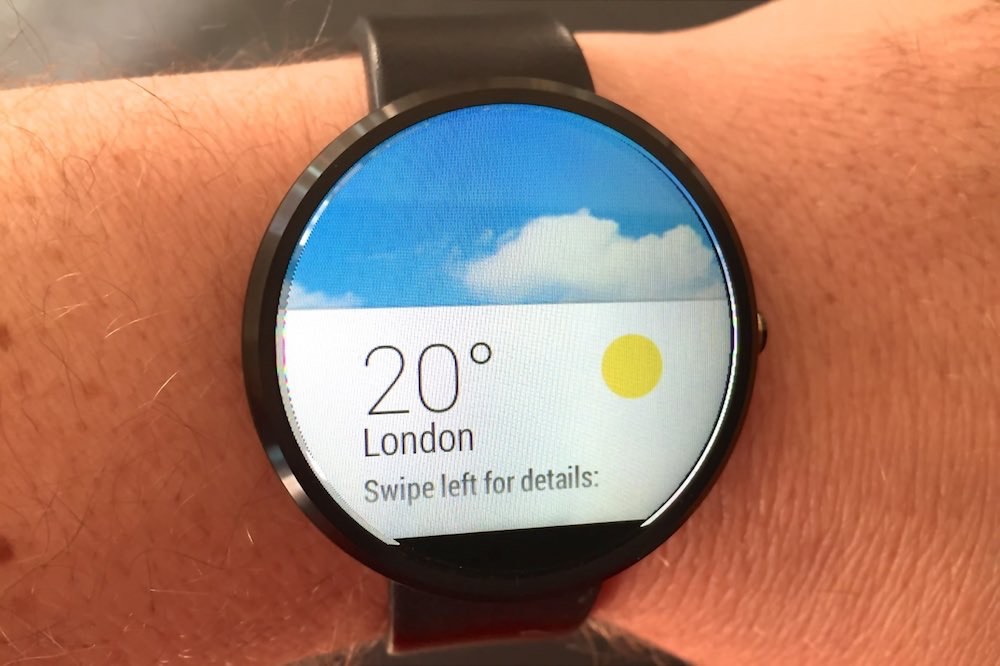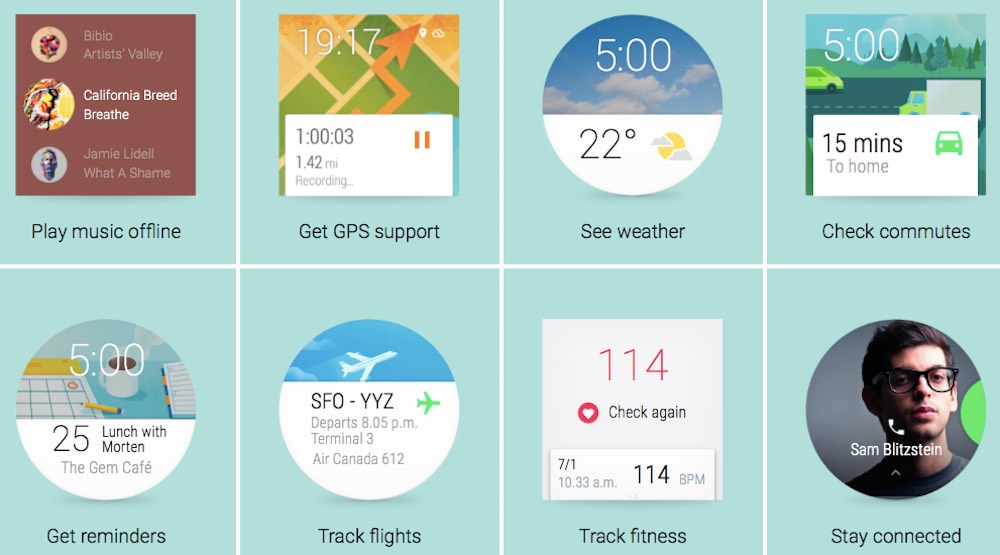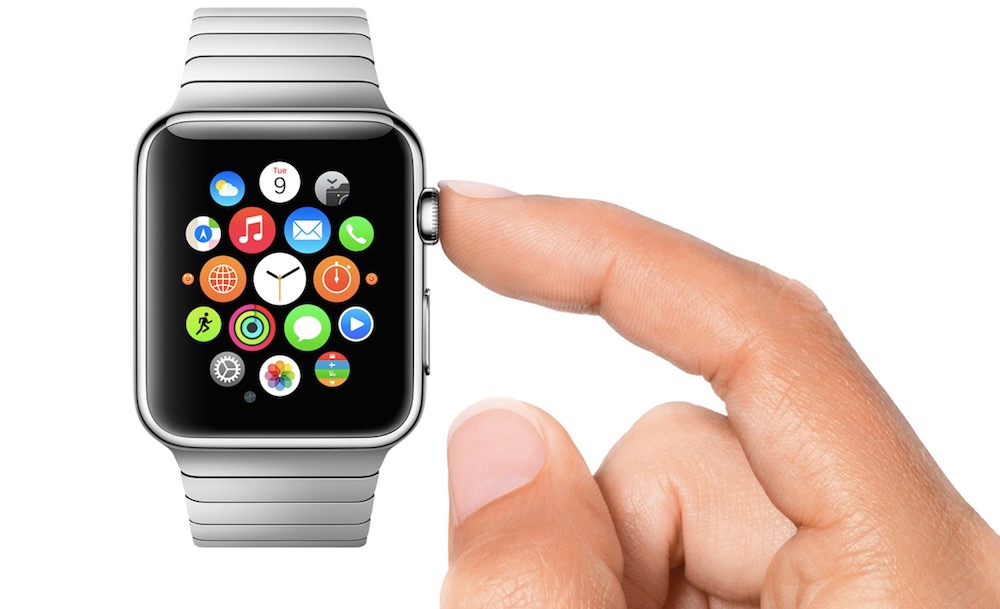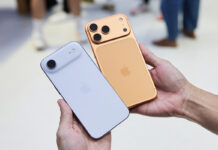
A smartwatch that lives up to expectations was elusive for decades, but in the past few years technology has begun to catch up to the dream. The commercial success of pioneers like the Pebble helped bring smartwatches to the mainstream in 2014, Samsung’s commitment to the devices resulted in multiple generations of Gear smartwatches in a single year and Android Wear ushered in the era of round-faced models like the Moto 360. 2015 looks to be even better as app stores take off, manufacturers tweak their designs and the Apple Watch arrives.
2014: The Year Smartwatches Took Off
Last year was a blur of new smartwatch arrivals, including multiple devices from Samsung (Gear 2, Gear 2 Neo, Gear Fit, Gear Live and Gear S).
Perhaps the biggest development was Google’s launch of Android Wear, a new operating system designed specifically for wearables and smartwatches. That made possible smartwatches with a more traditional round wristwatch form factor, like the highly anticipated Moto 360.

I had the opportunity to try out many of the most popular smartwatches of 2014, including that Moto 360. If you’d like to catch up on what I thought of each, here’s a quick list of the reviews and previews (with links):
- Moto 360 review: the smartwatch evolved
- Pebble Steel review: a good smartwatch gets more style
- The Martians Are coming! Martian Smartwatch Preview
- Review: Cookoo Smartwatch
- Gear 2 and Gear 2 Neo: Samsung introduces two Galaxy Gear smartwatch replacements
I also posted a review of the Samsung Galaxy Gear Fit—a fitness band with many smartwatch features.
2015: Your Smartwatch Will Keep Getting Better
One of the key takeaways from 2014 was that smartwatch manufacturers are big on improving their devices.
For example, Samsung offered Galaxy Gear owners the opportunity to upgrade their smartwatches to an entirely new operating system (Samsung’s own Tizen), gaining new functionality in the process. The company experimented with operating systems extensively in 2014, releasing both Tizen and Android Wear-powered versions.
Pebble offered a new upscale look with the Pebble Steel and launched an app store. And Android Wear keeps getting better (it just benefited from a Google Now update), with a growing library of apps.

With Android Wear taking off in popularity, many of last year’s smartwatches will be getting even smarter. And you can bet there will be a flurry of new smartwatch models released in 2015 to take advantage of the rapidly expanding market. Among the models I’m expecting to be popular are the LG G Watch R2, a Microsoft smartwatch (building on the experience of its Band fitness tracker), The Moto 360 2, Sony’s FES smartwatch with an E Ink display (direct competition for the Pebble in the battery life war) and of course the Apple Watch.
The Apple Watch
The elephant in the room throughout 2014 was Apple. When would the iPhone and iPad company release its own take on the smartwatch? We finally found out what it would be called and what it would look like in September.
The Apple Watch is actually two different sizes in three different collections: all Apple Watch models share the same rounded rectangular form factor, Retina display, Apple S1 processor, Digital Crown, accelerometer, heart rate sensor, magnetic charger and Watch OS operating system.
The Watch Sport is the most affordable of the Apple Watch models, with a 1.32-inch (diagonal) display and an anodized aluminum case available in silver or space grey. Plastic sport bands are offered in five different colours. With an emphasis on being compact, lightweight and sporty, the Apple Watch Sport is aimed at active users with an eye at replacing their fitness tracker.
Next is the Apple Watch Collection. Available with either the 1.32-inch display or a larger 1.5-inch version it has a stainless steel case finished in polished steel or space black. The watch face in this version is sapphire crystal, an ultra tough and scratch resistant material. There are nine different bands offered, including leather, link and loop and a sport band.
Finally there’s the Watch Edition, a move to bring smartwatches in direct competition with luxury wristwatches. These Apple Watch models have gold cases. Not gold-plated, solid 18-karat gold in yellow or rose, with correspondingly fashionable watch band options. The gold Watch Edition will test the waters in terms of consumer acceptance of premium pricing for high tech products.
Like most smartwatches released in 2014, the Apple Watch relies on a smartphone—in this case an Apple iPhone—for connectivity. Powered by Apple’s new Watch OS and with a Retina display, it is also capable of running its own apps. User control is via a new force-sensitive screen (which can distinguish between a tap and a press) and a new digital crown, which looks like a traditional winding fob on a wristwatch but provides zooming and pushbutton access to the Home Screen.

Obviously health and fitness apps will be big, but Apple has already previewed Maps, Calendar, Photos, Siri and other native apps; it will also be part of Apple Pay (which isn’t yet in Canada). Third party developers are also hard at work.
We know the Apple Watch will be available in April and that the base model will be priced at $349 (US), however exact release dates and Canadian pricing have not yet been announced.
Get Ready For a Wild Smartphone Ride
2014 was a breakout year for the smartwatch. We got tons of new models, the form factor was pushed in new directions and the new Android Wear operating system promises a greatly improved user experience along with new apps.
2015 looks to be even better. If you bought a smartwatch last year, there’s a good chance it’s going to get even smarter. As the technology rapidly improves, we can expect the smartwatch models that launch in 2015 are going to take the devices to a new level, with improved displays, thinner form factors and (hopefully) improved battery life.
Making things even more interesting, the Apple Watch is going to land soon, bringing Apple’s expertise in hardware design and user experience to the industry. And that, as much as anything else, is going to have every other smartphone manufacturer laser focused on making their product as compelling as possible.
All of which benefits smartphone owners and the many people expected to take the plunge into smartphone ownership in 2015.



